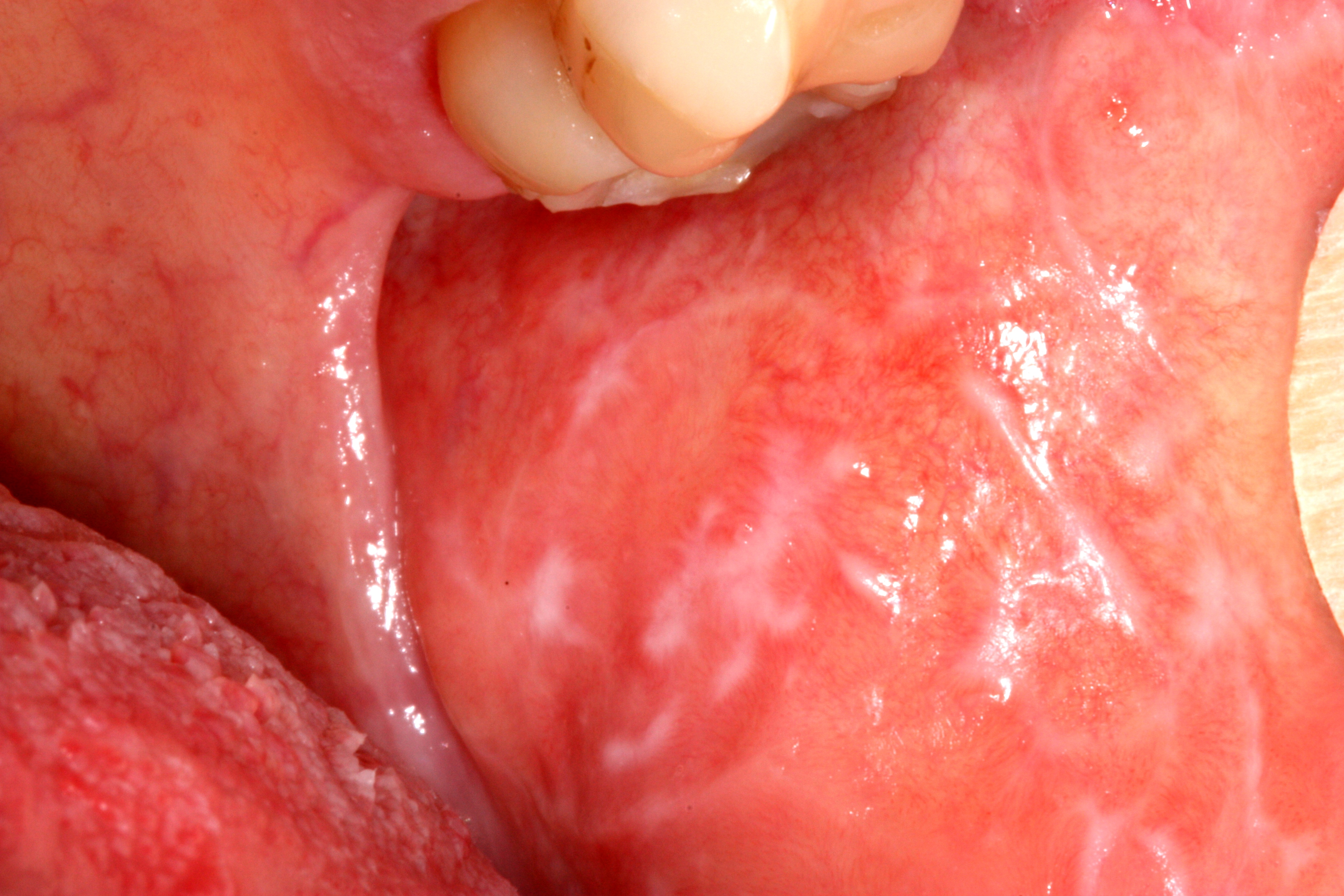Oral Lichen Planus
Question: What is oral lichen planus?
Answer: It is a chronic inflammatory condition that affects the skin, nails, hair, and mucous membranes, characterised by purplish, itchy, flat eruptions.
Question: How common is the condition?
Answer: It is a common condition in India. Its cases are reported more than 10 lakh per year in India.
Question: How much time does it need for recovery?
Answer: It can last several years or remains lifelong.
Question: Is the condition treatable?
Answer: Treatments can help manage conditions. There is no known cure present.
Question: Does diagnosis require lab tests or imaging?
Answer: Its diagnosis rarely requires lab tests or imaging.
Condition Highlights
- It commonly occurs for ages 35-50.
- It is more common in females.
- Family history may increase likelihood to occur.
Lichen planus is an uncommon condition. It is an idiopathic immune-mediated condition that can affect the oral mucosa, skin, hair, nails, and genital mucosae.
Oral lichen planus typically occurs on the buccal mucosa, tongue and gingivae. It occurs in two distinct forms.
- Erosive form
- Non-erosive form
- Reticular
- Atrophic
- Plaque-like
- Papular
- Bullous
Symptoms
Symptoms include stinging or burning, especially with spicy or acidic food. Oral lichen planus is associated with an increased risk of oral squamous cell carcinoma.
Oral lichen planus is associated with an increased risk of oral squamous cell carcinoma.
Management
Patients with oral lichen planus require ongoing review by an oral medicine specialist because of the chronic nature of the condition and the potential for malignant transformation.
Symptomatic Lichen Planus
If biopsy-proven oral lichen planus becomes symptomatic, treat with:
Advise patients to stop using topical corticosteroids once symptoms have resolved. If the patient’s symptoms have not improved after 3 weeks of topical corticosteroids, the symptoms change or the appearance or texture of the lesion changes, advise patients to return to their treating specialist.
Betamethasone dipropionate 0.05% cream or ointment topically to the lesions, twice daily after meals, until symptoms resolve.
The treating specialist should perform the biopsy of an oral mucosal lesion.
In rural or remote areas where a delay in specialist review is expected, seek expert advice on biopsy technique. Doing a punch biopsy is not appropriate for Lichen Planus.
